Wondering what to eat and drink in Porto?
Besides all the sights and attractions, trying local food in Porto should be high on your to-do list. Eating in Porto will not break the bank. Many local cafes, cervejarias (pubs) and restaurants in Porto are very affordable.
The food in Porto draws from the contrasted landscape on the ocean side, the Trás-os-Montes isolated mountains, and the hillsides of Douro Valley. This mountain region brings hearty meats and cheeses and some of the richest and sweet Port wines and fine red and white table wines, while the city brings you a variety of food options including seafood and lots of sandwiches!
Visit our best, most authentic tascas (traditional small restaurants) to try our favourite local snacks (petiscos as we call them) and explore the traditional local market. It’s a very Portuguese experience, with noisy locals, unpretentious food & each place with its own unique atmosphere.
Loosen those belts, foodies!
Francesinhas, hot dogs, tripe, and Port – food in Porto is an eclectic mix of the weird and the wonderful. It’s all worth trying at least once but, if you’re short on time and belly space, we have highlighted the dishes that we think are worth prioritising.
Are you ready for the best food in Porto?
Francesinha
The mother of all sandwiches!
Originated in Porto, Francesinha is the city’s most famous dish. And it might be the biggest sandwich you have ever seen. The name literally means “little French girl”, because this recipe originated in the city in the ‘60s as an evolution of the Croque Monsieur by a Portuguese immigrant who worked in France.
Are you ready to hear about the ingredients?
It’s got beef steak, sausages, cured meat, and ham sandwiched together by two slices of bread, and the entire sandwich is covered with melted cheese and is drenched in a spicy beer sauce. What’s in the sauce? No one really knows. Each chef has their own secret, but beer is normally the base. And it is topped off with a fried egg. Woah!
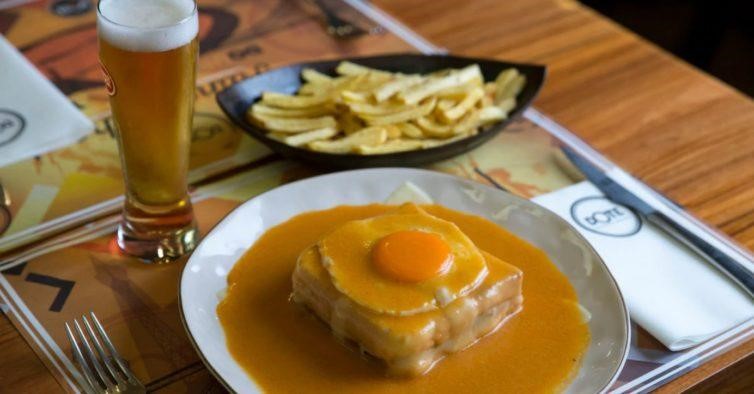
And the best way to enjoy a Francesinha is with fries and a very cold Super Bock (beer). Moreover, it serves as the ultimate hangover cure!
Tripas à Moda do Porto
It’s almost a foodie crime to visit a city and not taste its namesake dish – and Tripas à Moda do Porto (Porto tripe) is also a dish with a story.
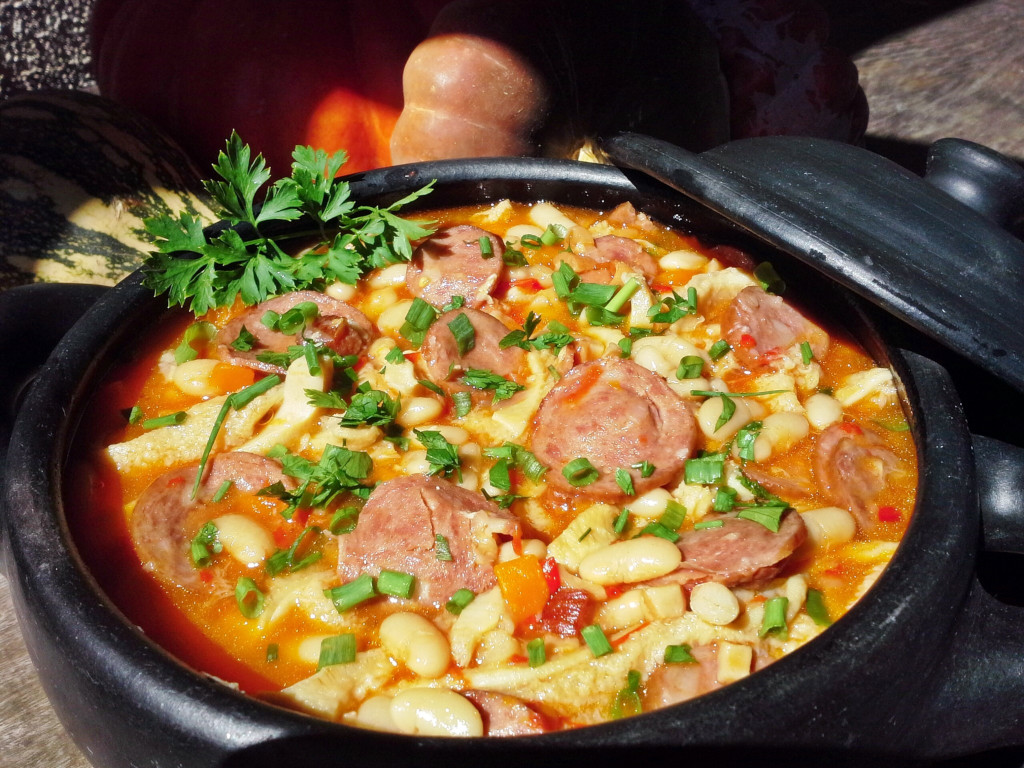
It’s said that when Henry the Navigator was preparing his ships to conquer Ceuta in 1415, he asked for help gathering supplies from the people of Porto. The result was an outward show of generosity – so much so that the locals were left only with animal entrails and organs. As necessity facilitates creativity, Tripas à Moda do Porto was thus born. This dish (now complete with beans, sausage, vegetables and herbs) has become so popular that it led to the term tripeiros, a nickname for locals from Porto.
Cachorrinho
Cachorrinho or Cachorro, is a Portuguese hotdog. It looks like a typical hot dog but it’s got a few extra ingredients to elevate the dish.
It starts with sausage and cheese in a thin French roll. Then the entire hot dog is grilled in a panini press, cut into small bite-size pieces, and topped off with a spicy sauce.

The Cachorro is an ideal snack as it is already cut in pieces or eat it for a light lunch. It goes super well with a cold beer and, of course, fries.
The best cafes and cervejarias (pub) in Porto will serve this wonderful snack.
Bifana
A Bifana is a traditional Portuguese sandwich made with thin slices of marinated pork sandwiched between a bread roll. The pork is cooked in a savoury broth made with garlic and spices.
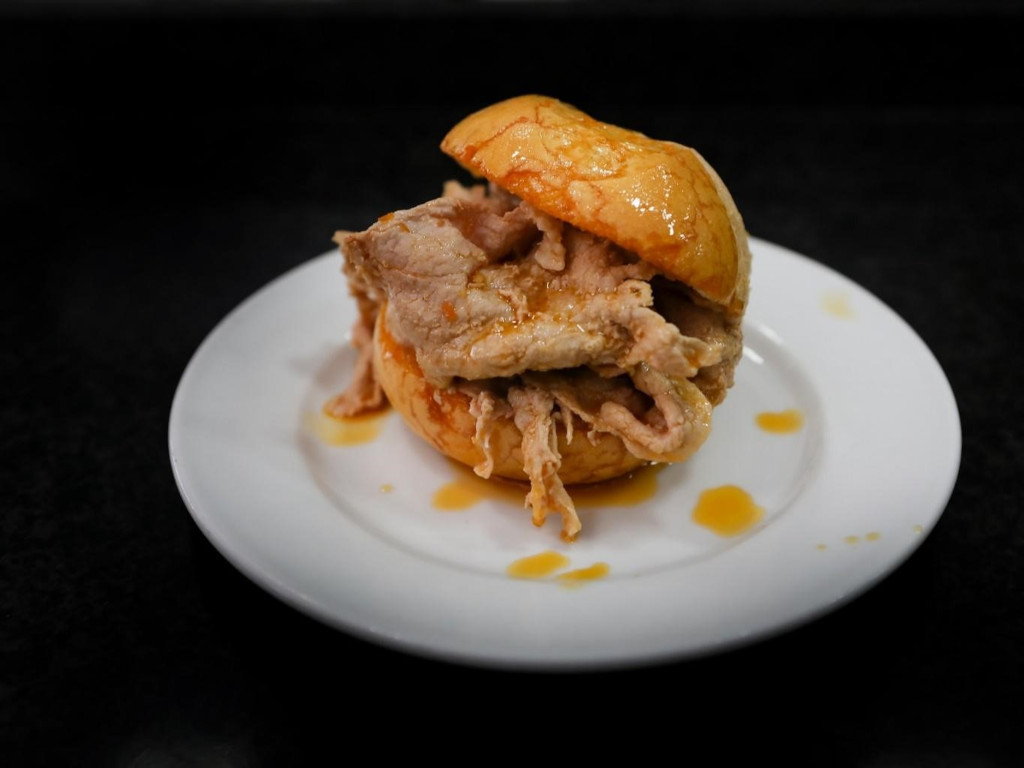
You can find bifana anywhere in Portugal but the ones in northern Portugal are a bit spicy.
Eat it as a snack or have it as a meal. The Porto-style bifana is very affordable and can be found at any cervejarias in Porto.
Sande de Pernil
There is no shortage of sandwiches in Porto! One of the best is the Sande de Pernil, which is a simple Portuguese sandwich made with roast pork.
The best one is the sande de pernil com queijo, which is a roast pork shoulder sandwich with Portuguese Serra da Estrela cheese on a rustic bun. The pork and soft cheese really go well together!
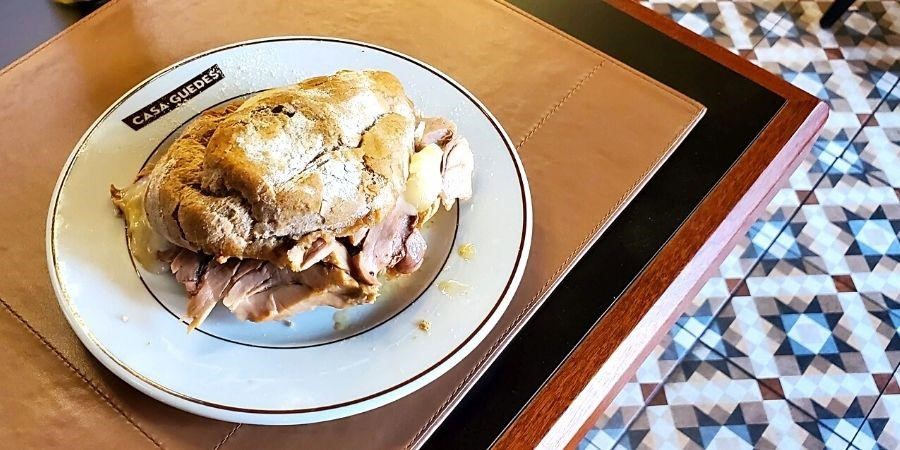
The pork is swimming in sauce, the cheese is creamy and the bread is lightly toasted. Accompanied by a refreshing glass of vinho verde (green wine), it serves as the perfect late afternoon snack after a long day of sightseeing in Porto.
Make sure you order them from Casa Guedes in downtown Porto. There is a terrace where you can enjoy these delicacies and the garden views, located side by side with São Lázaro garden.
Prego no Pão
Similar to a Bifana, a Prego is a simple Portuguese steak sandwich. The steak is often a sirloin steak with a subtle garlic flavour and is placed in a crusty white bun. And you can find a Prego sandwich at any local restaurant in Porto.
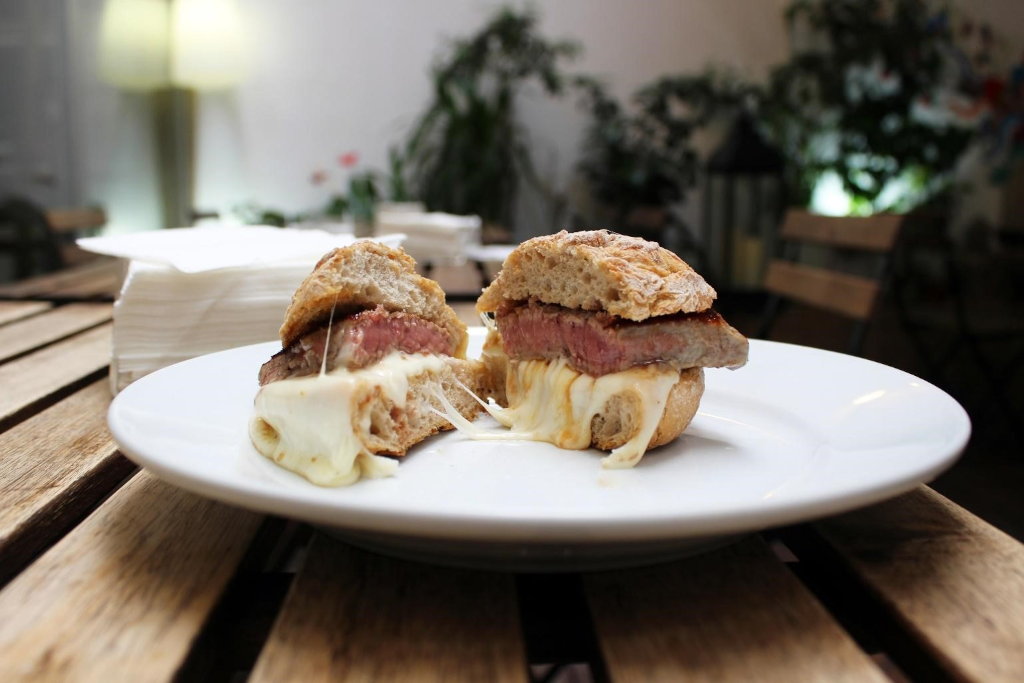
In Portuguese, prego means “nail.” It refers to the sandwich where chunks of garlic are pounded (or nailed) into the steak before cooking. No wonder the steak sandwich tastes so good!
There are variations of this steak sandwich where you can add cheese, fried egg, ham and even prawns. Whatever you choose to add to your steak sandwich, make sure to order a side of fries.
Caldo Verde
Caldo Verde means literally “green soup.” It is a traditional Portuguese soup made with thinly sliced kale or collard greens, potatoes, and sliced chouriço sausage.
The soup was born in Northern Portugal, but you can get the green soup anywhere in Portugal. This hearty and homey soup is an excellent appetiser or a light meal. This soup is the most typical dish, together with grilled sardines, during the St John Festival, in Porto, on the 23rd and 24th of June, every year.
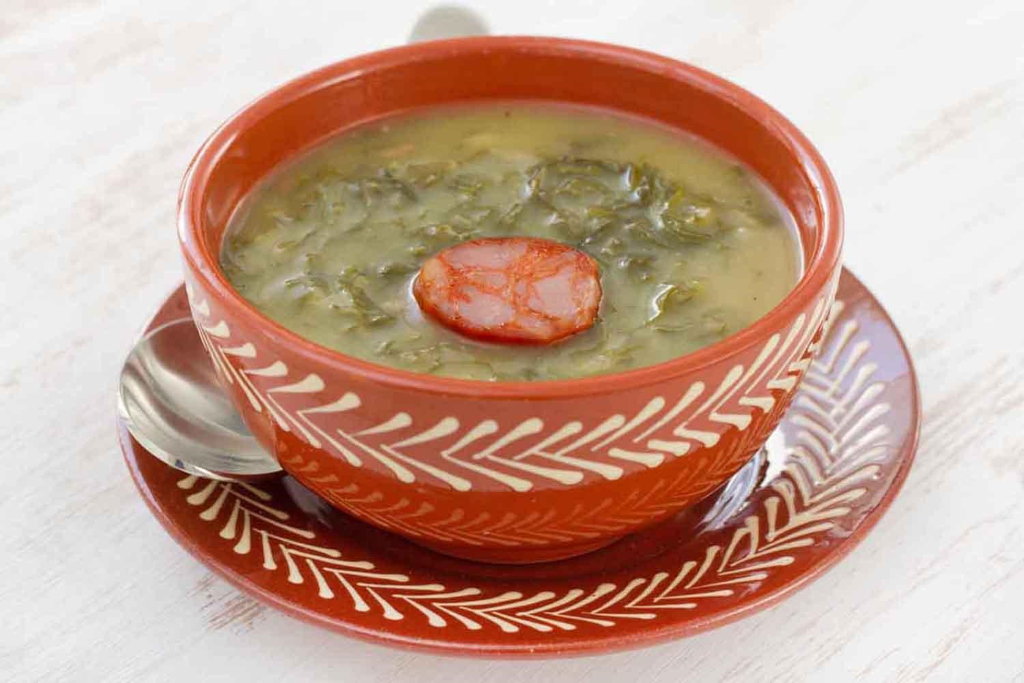
Alheira
Alheira is a type of Portuguese smoked sausage invented by Jewish people in Northern Portugal who wanted a pork-free sausage substitute. That’s why the horseshoe-shaped sausage is not made with pork but with various types of meat including chicken, turkey, partridge, veal, rabbit or other game meat.
The original alheira were pork-free sausages said to have been invented by the Portuguese Jewish people during the Spanish Inquisition, at the end of XV century. When the practice of the Jewish faith was outlawed, Jews were identified as they lacked traditional pork sausages hanging from their smokehouses. To disguise themselves as “New Christians,” they created their own sausage, made with bread and chicken, which resembled the traditional pork sausage, the chouriço, which deceived royal officials for many years.
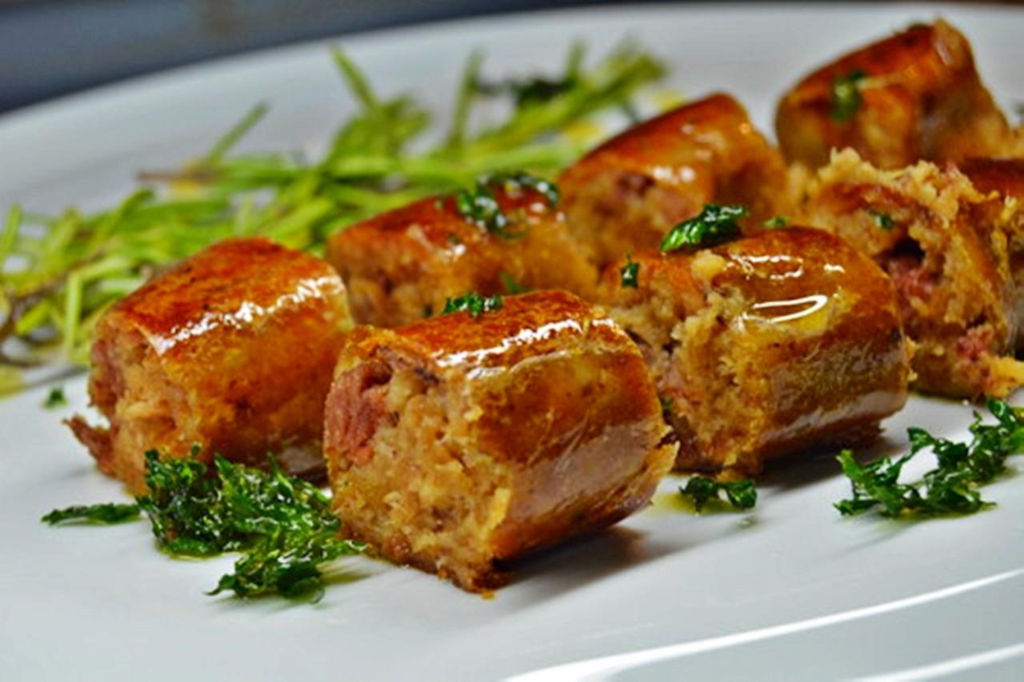
The sausage is grilled, fried or baked in the oven and is served with a fried egg, fries, white rice and/or salad. The main ingredients in these horseshoe-shaped sausages are poultry (chicken and turkey) or game meat (duck, rabbit, venison, pheasant).
Many restaurants in Porto have Alheira on the lunch menu. It is better to have it during the day as the sausage is quite rich and filling.
Bacalhau
Bacalhau is cod fish and is one of the most common ingredients in Portugal. Before it is cooked, the cod is dried and salted which is why it always tastes a bit salty. Surprisingly, cod is not native to Portugal. It is imported from Newfoundland in Canada, Norway and Iceland. But today, bacalhau is a staple in Portuguese cuisine.
Someone said that we have 1001 ways to prepare Bacalhau, but we want to highlight in particular 2 Bacalhau dishes invented in Porto:
Bacalhau à Gomes de Sá
You can’t leave Portugal without trying at least one bacalhau dish. Bacalhau à Gomes de Sá is the most typical bacalhau dish from Porto.
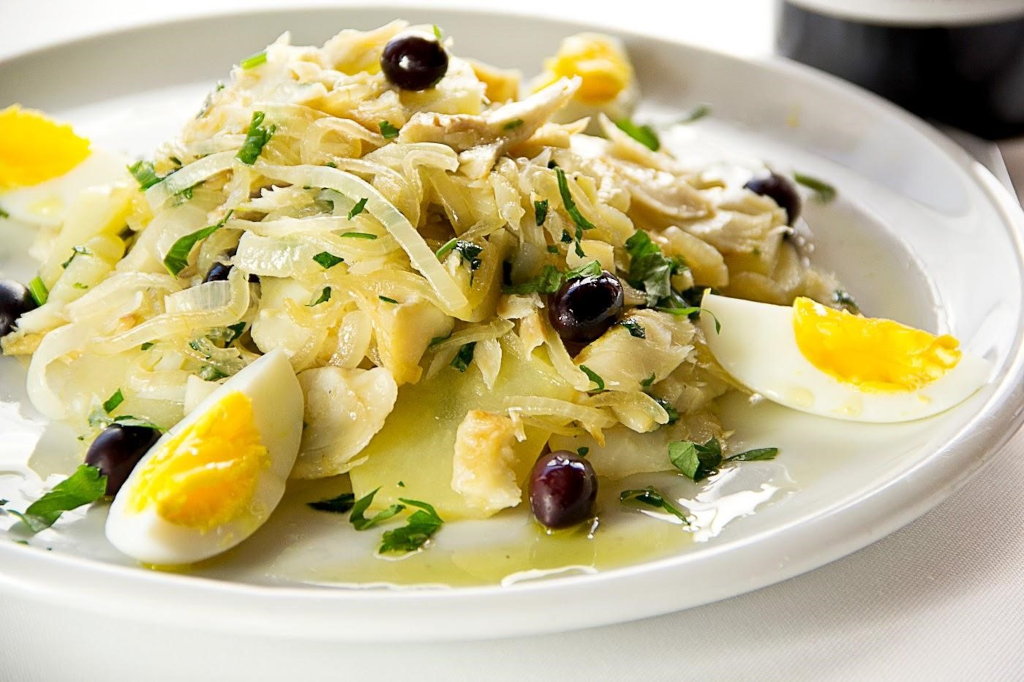
And, as bacalhau dishes go, it’s a good dish too. It’s loved all over Portugal and it was also a finalist in the “7 gastronomic wonders of Portugal” competition that the Ministry of Culture ran to find the country’s best dishes.
Bacalhau à Gomes de Sá is a deconstructed version of bolinhos de bacalhau, the cod fritters that you’ll see all over Portugal. The recipe was created by José Luís Gomes de Sá.
Bacalhau à Zé do Pipo
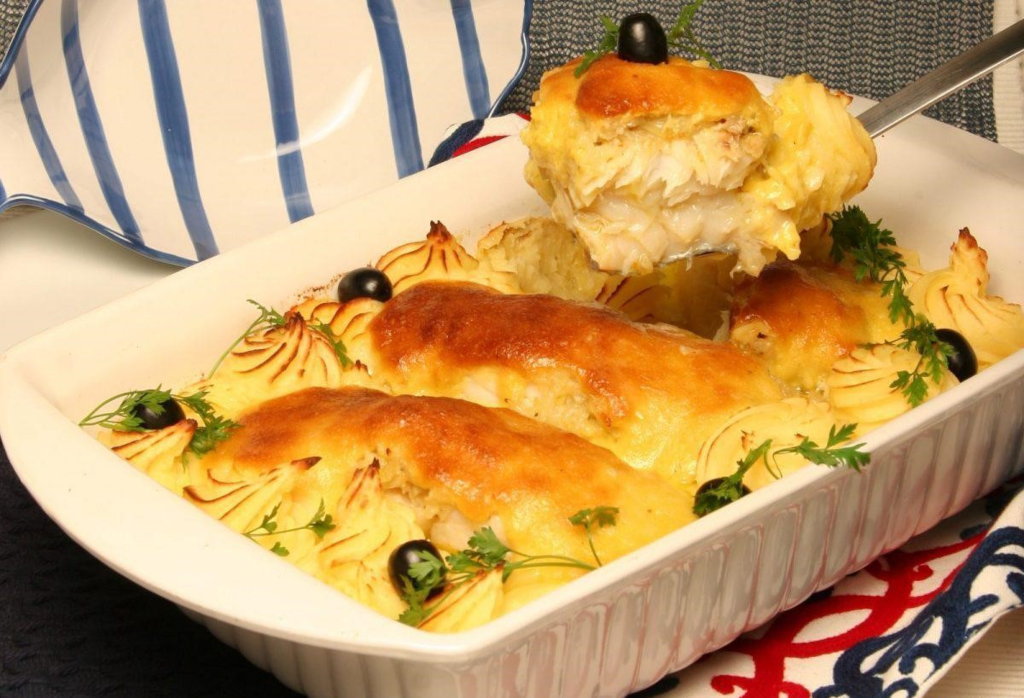
Bacalhau à Zé do Pipo was invented in the 1960s by Zé do Pipo, a restaurant owner from Porto. The dish, which is baked in the oven, combines bacalhau that has been cooked in milk, onions, mashed potatoes, and mayonnaise. Yes, that’s right: warm mayonnaise.
The dish won awards during the 60s, probably back when mayonnaise was seen as a revolutionary cooking ingredient, and was adopted by restaurants all over the country.
It’s rare to see it on menus these days, but it does pop up from time to time. If you’re committed to trying all of Porto’s regional dishes, this one deserves a place on your “to eat list” as much as the Francesinha and the Cachorrinho.
Peixe Grelhado
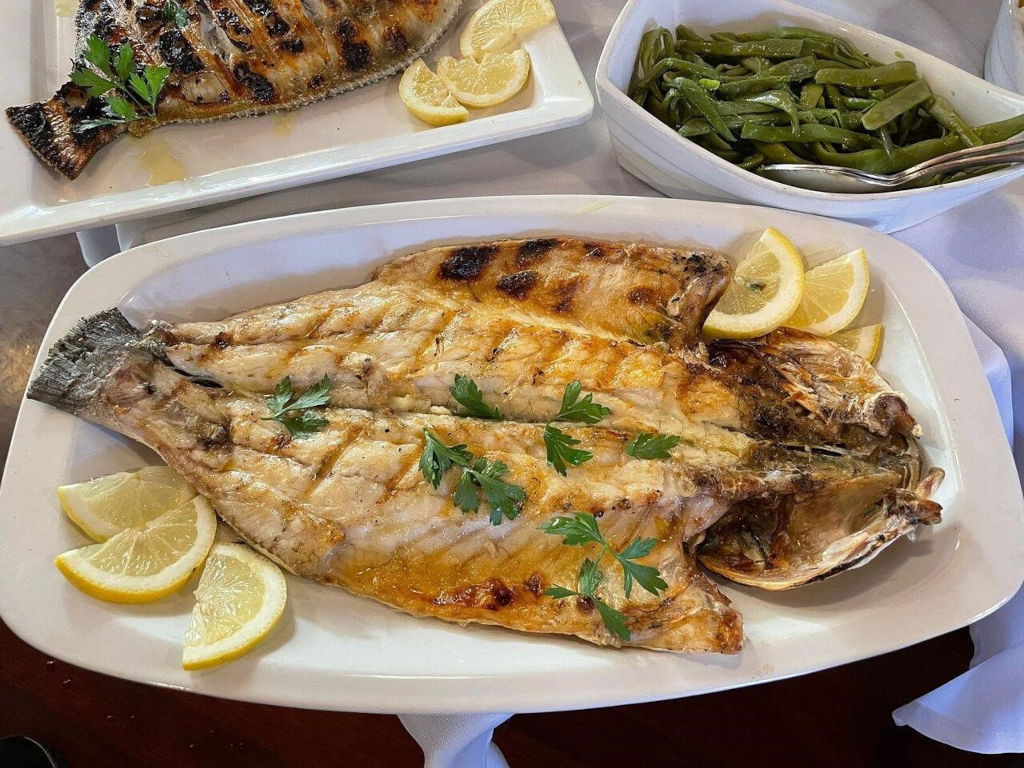
Portugal won the jackpot when it comes to proximity to the sea and fresh seafood. And even in the northern part of the country, seafood is a big part of the Portuguese culinary scene.
When you see “peixe grelhado” on the menu, that means the restaurant serves a variety of Portuguese-style grilled fish. The fish is lightly seasoned and grilled as a whole over a charcoal grill.
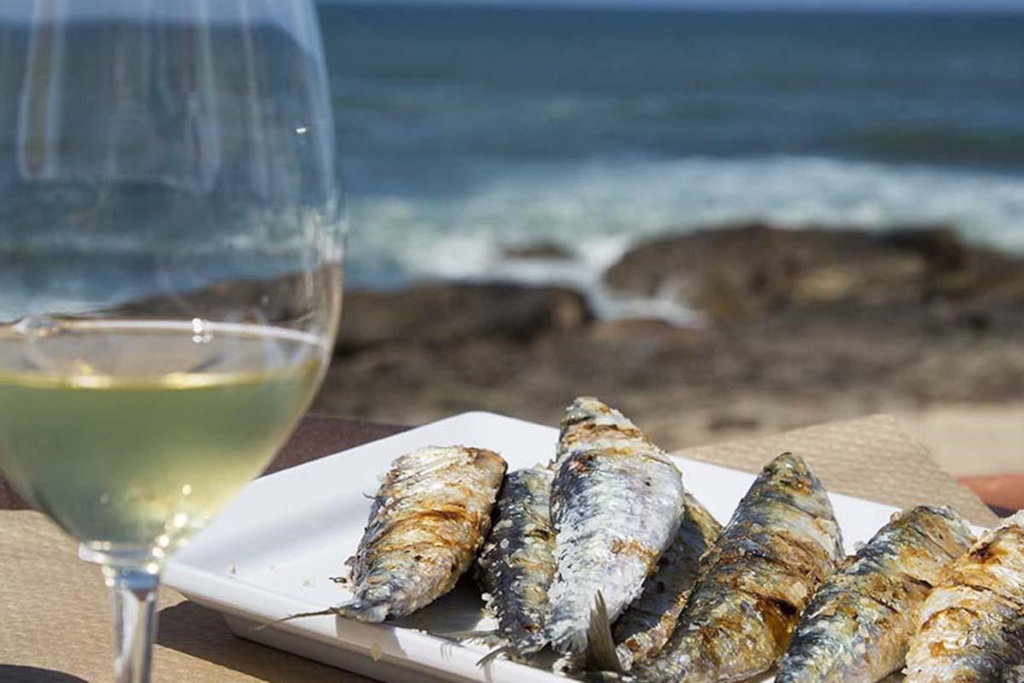
The most popular fish is sardinhas (sardines). But if you don’t like the fishy-ness of the sardines, try other grilled fish like dourada (golden bream), robalo (sea bass), linguado (sole), rodovalho (turbot), salmonetes (red mullet), or garoupa (grouper).
A typical plate includes grilled fish, boiled or roasted potatoes, and boiled vegetables.
Broa de Avintes

Broa de Avintes is one of the most famous breads in Porto. It hails from Avintes, a small town on the other side of the Douro River, near Porto. This bread is a very dense, dark brown in colour and widely eaten on local tables in the northern part of the country.
The Broa de Avintes bread is quite unique with its coarse crumbs and distinctive flavour. It is made with corn and rye flours. Typically, the baking process is slow and the dough cooks for about 6 hours. This bread can be served warm in traditional dishes. It is also served with starters or to accompany soups.
Porto foods are great. However, they are even better when enjoyed with a good wine or beer pairing.
Vinho do Porto and Douro Wines
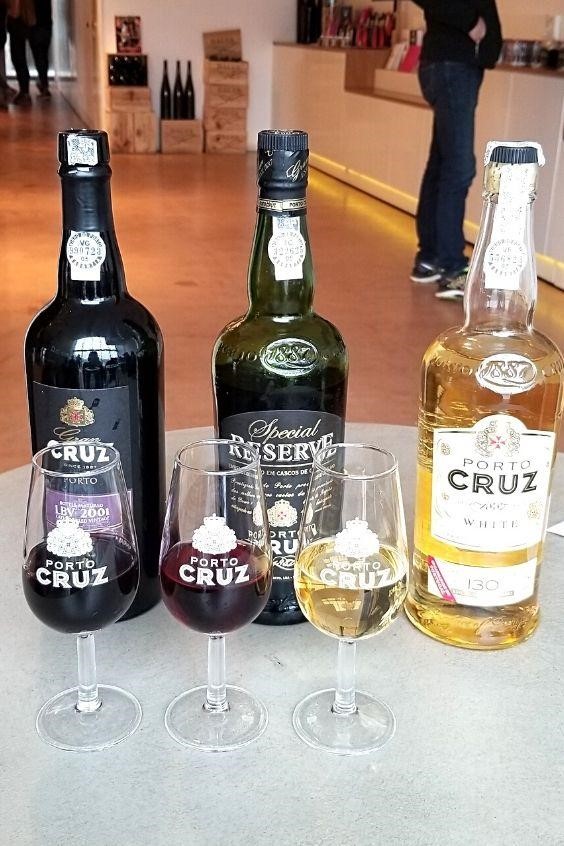
Vinho do Porto means port wine in English (or you can call it port, for short). It is a Portuguese fortified wine that is served as a dessert wine. Port wine is made in Douro Valley, near Porto, but it is the city of Porto that gives the name to the wine.
There are different types of port wine, including red, white, rosé, and tawny. They all taste sweeter and richer than regular wine and have higher alcohol content.
You can try port at any restaurant in Porto or one of the port wine cellars in Vila Nova de Gaia on the south side of the Douro River.
For many people, Port Wine isn’t something that they either know a lot about or have even tasted that much. Port is often seen as a bit stuffy and something that older people drink. And with the exception of Christmas time, it rarely makes an appearance.
By the time you leave Porto, you will be a converted Port drinker. Guaranteed.
Aside from the perceptions people have of Port being stuffy or old-fashioned, one of the other reasons Port doesn’t have the following it deserves is because most people have only ever tasted a very basic Ruby or Tawny Port.
Try an LBV or, better yet, a vintage Port or an aged Tawny and you’ll soon see what the fuss is all about.
We recommend visiting one of the many Port Houses located on the banks of the Douro. They’re all located very close to each other, so you can visit more than one if you want as well.
As for the ‘regular’ Douro wines, it was only after the Alto Douro Wine Region was classified as a World Heritage Site by UNESCO, in 2001, that the Douro table wines began to appear. Due to their unique characteristics, they have been recognized by specialists as one of the best in the world.
Portuguese Sangria
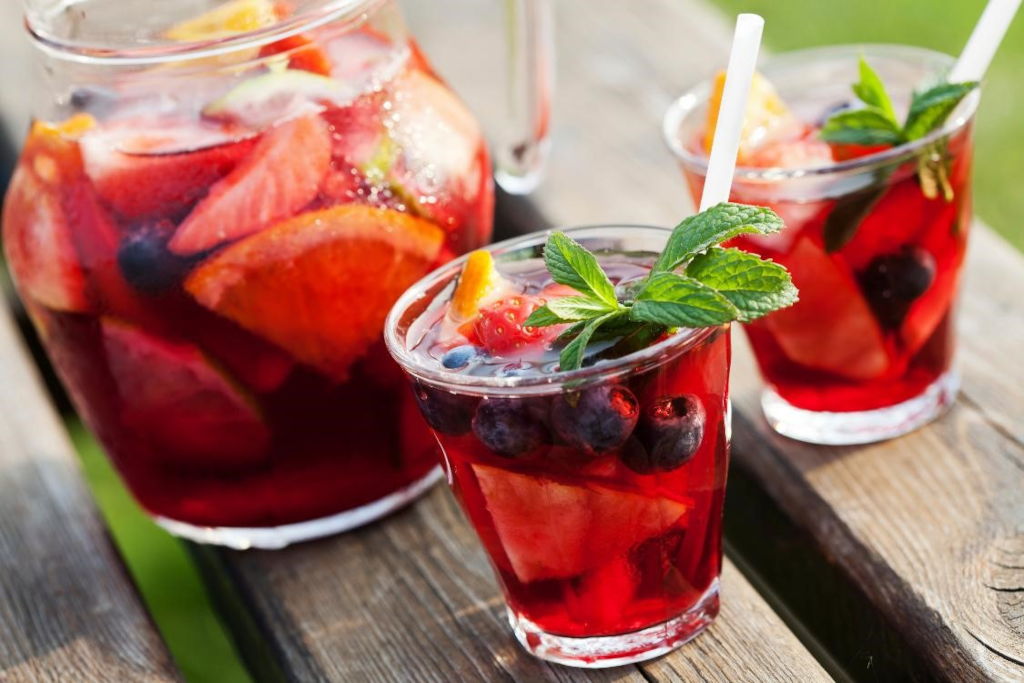
The Portuguese Sangria is a refreshing summer drink that goes well with any food in Porto. The sangria is commonly made with either red or white wine, liquor (brandy, sherry, port wine), mixed fruits (apples, oranges), a cinnamon stick, sprigs of fresh mint leaves, fruit juices, and ice.
There isn’t a specific recipe for making Portuguese sangria, but it is always made with a combination of wine, fruits, and spice that makes the drink so delicious!
We’ve seen red and white sangria on the menu in Porto restaurants, but there are other variations including passion fruit and other fruit-based drinks.
The Portuguese sangria tastes sweet but oh so boozy! Get a glass of sangria with your meal or a half litre.
So, which of these Porto foods are you interested in trying?


This looks fantastic, thanks so much!